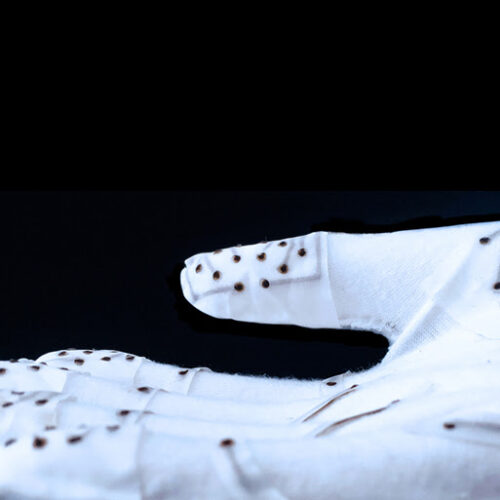BMJ Exercise helps women with arm and shoulder problems after breast cancer surgery Early post-operative exercise appears to help women recover better than receiving standard care only, study shows Women who exercise shortly after having non-reconstructive breast cancer surgery appear to regain better shoulder and arm mobility and experience less pain than those who receive...
Category: <span>Rehab</span>
TO MAKE THE MOST OF EXOSKELETONS, TRAINING REALLY MATTERS
Exoskeleton devices work, researchers say, for a variety of uses such as speeding up our walking or making running easier. Yet they don’t know what exactly makes exoskeletons effective. What is the benefit of customization, for example? And how much does simply getting used to the exoskeleton matter? “People are amazing at learning new tasks,”...
Post-stroke rehabilitation proves more effective when vibratory stimulus coincides
by Medical University of South Carolina Researchers have found that the extra vibratory stimulus increases activity in the brain during grip tasks, which in turn improves a patient’s hand function after therapy has concluded. Credit: MUSC Health Every 40 seconds someone in the U.S. experiences a stroke, according to the Centers for Disease Control and Prevention....
EvoWalk Digital Therapy Platform: Interview with Pierluigi Mantovani, CEO at Evolution Devices
CONN HASTINGS EXCLUSIVE, NEUROLOGY, REHAB Evolution Devices, a company based in California, created a functional electrical stimulation device to assist people with foot drop to walk more freely. Foot drop is caused by muscle weakness/paralysis, and those affected struggle to lift the front part of their foot, which makes walking difficult and can lead to falls. The product...
For the first time, stroke study reveals optimal timing and intensity for arm and hand rehabilitation
by Georgetown University Medical Center Micrograph showing cortical pseudolaminar necrosis, a finding seen in strokes on medical imaging and at autopsy. H&E-LFB stain. Credit: Nephron/Wikipedia A phase II, randomized clinical trial found that the optimal period for intensive rehabilitation of arm and hand use after a stroke should begin 60 to 90 days after the event. The study,...
Physiotherapy’s vital role in treating long COVID
by University of Otago Credit: Unsplash/CC0 Public Domain As more about the effects of long COVID is learnt, it is apparent that cardio-respiratory physiotherapists have an essential role in helping people recover from the virus, a University of Otago physiotherapy specialist says. Dr. Sarah Rhodes is a cardio-respiratory physiotherapist, a Lecturer at the University of...
Robot-assisted therapy can help treat stroke survivors, study finds
IMAGE: RESEARCH LED BY UTHEALTH SHOWED POTENTIAL FOR THE EKSO 1.1TM EXOSKELETON TO CORRECT IMPAIRED WALKING PATTERNS ON A WEAK OR PARALYZED LEG, AND INCREASE ITS MOTOR COORDINATION. CREDIT: PHOTO COURTESY OF FANGSHI ZHU, PHD/UTHEALTH Exoskeleton-assisted rehabilitation can be beneficial in treating stroke survivors, according to researchers at The University of Texas Health Science Center...
Cognitive rehabilitation improves cognitive impairment in people with multiple sclerosis
by Kessler Foundation A research scientist (left) supervises a participant with MS during a computer-based cognitive rehabilitation training session at Kessler Foundation. Credit: Kessler Foundation/Jody Banks In a review of recent literature, a team of researchers from Kessler Foundation conclude that cognitive rehabilitation programs are efficacious in treating multiple sclerosis-related cognitive dysfunction, and urge clinicians to consider...
Sensing Glove to Aid in Stroke Recovery
AUGUST 10TH, 2021, CONN HASTINGS Researchers at MIT created a sensing glove that can detect small pressure changes along its surface when a wearer grasps something. The glove is threaded with tiny pressure sensors, which are studded with micropillars that create changes in an electrical signal when they bend and deform. This provides an incredibly...
Low-power electrical stimulation could aid stroke rehabilitation
by DGIST (Daegu Gyeongbuk Institute of Science and Technology) Synaptic remapping by electrical stimulation after stroke. (a) The connection between pre-and postsynaptic neurons are rebuilt by stroke and electrical stimulation. After stroke newly made connections are strengthened by electrical stimulation. (b) Incoming EPSP from presynaptic neurons and additional potential provided by STES induces a postsynaptic...








